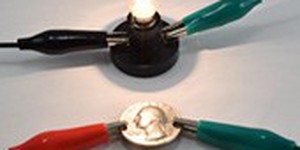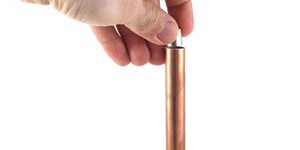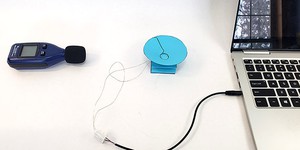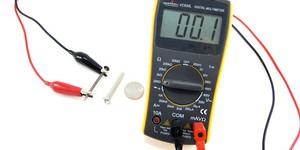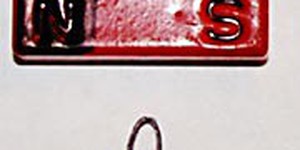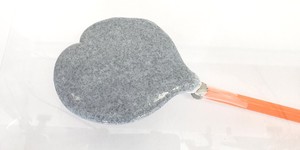Others Like “Effect of Different Materials on a Magnetic Field” (top 20 results)
|
An electric current produces a magnetic field. You can take advantage of this fact to make a simple apparatus to test the electrical conductivity of various materials, including both solids and liquids. The detector consists of a coil of wire, with a magnetic compass inside it. You connect one end of the coil to a D-cell battery. The other end of the coil is connected to whatever material you are testing, and the material, in turn, is connected to the other end of the D-cell. In other…
Read more
You probably know that you can use iron filings to reveal the magnetic field produced by a strong magnet. If you sandwich the iron filings between pieces of waxed paper, you can make a permanent record of your magnetic experiments (Gardner, 2004, 66). Cover the wax paper sandwich with a layer of brown paper (from a roll, or cut open a paper shopping bag), and then (with an adult's help) use a hot, dry iron to seal the waxed paper together. You will have to experiment a little with your iron…
Read more
Electricity powers many of the devices we use every day, from lights to video games and computers. Engineers have to use certain materials to make electrical devices work. In this experiment, you will find out which materials let electricity flow through them (conductors) and which ones prevent electricity from flowing through them (insulators).
Read more
Maybe somewhere in your home there's a long hallway or a stairway with a light that you can turn on from either end. It's a nice convenience, but did you ever wonder how it's wired up to work that way? The goal of this project is to build a similar circuit with switches, flashlight batteries and a flashlight bulb (obviously, household circuits are not safe to experiment with). You'll need to understand the difference between connections made in series and connections made in parallel in an…
Read more
Did you know that not all trains run on tracks? Some of the world's fastest trains are magnetic levitation trains (maglev). This means that the carriage of the train is suspended over the rails with no support, but only with magnetic fields! There is a physical explanation for magnetic levitation, and if you would like to learn more about magnetism and current, this is a science fair project that you must try!
Read more
Start with 7 drinking straws and 14 paper clips. Use the paper clips to fasten the straws together. Here's how: 1) Clip two paper clips together, narrow end to narrow end. 2) Push the wide ends of each clip into the end of a straw. That's it! Connect four straws to make a square, and three straws to make a triangle. Now test which shape is stronger. Hold the shapes vertically, with an edge or a vertex resting on the tabletop. Have a helper push on the opposite side or vertex. Which shape…
Read more
Can you build a working speaker out of paper? How does a speaker's ability to play low or high-pitched notes depend on its size? Explore the science of sound in this project as you build and test your own speakers in order to answer these questions!
Read more
Measuring the value of a resistor with a multimeter is pretty simple. You set the multimeter to measure resistance, connect the two leads to the resistor (possibly using some handy alligator clips), and read the resistance value. This is called a two-point measurement (one probe on each of the two resistor leads). But what if the resistance you want to measure is very small, in the milli or micro-ohm (mΩ or μΩ) range? This can introduce problems because many low-cost multimeters…
Read more
This is a straightforward project that shows you how data can be digitized and stored on magnetic recording media. You'll learn how alpha-numeric characters are digitized, and you'll use bar magnets to represent the individual data "bits." You'll also learn about how much information can be stored in a small space (recording density), and how magnetic data can be erased.
Read more
Could you use a magnetic slime "robot" to retrieve a battery accidentally swallowed by a small child? Scientists think so! Watch this video to learn about magnetic slime that, when driven by external magnetic fields, can squeeze through small spaces and even grasp objects.
Can you make your own magnetic slime robot that can accomplish some of the same tasks demonstrated by the researchers? You can start by adding iron filings to slime to make your own magnetic slime (see this Science…
Read more
|
Explore Our Science Videos
Junkbots Lesson Plan Introduction
Toy Sailboat with Keel
Make a Slushy! Yummy STEM Project



